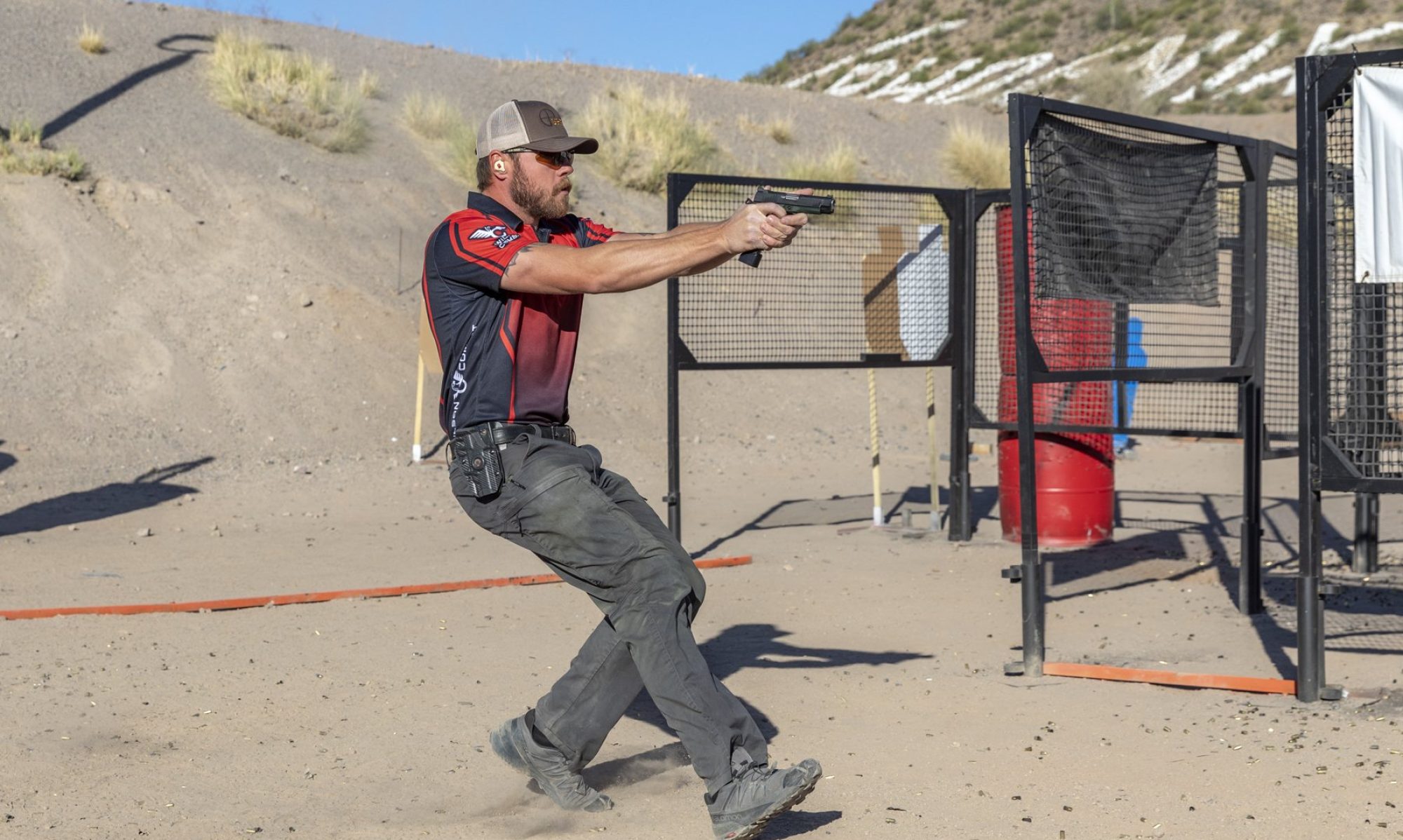The Rapid Action Precision Tactical Rifle (RAPTR) course is a tailor-made curriculum for law enforcement, military, security, and other intermediate-range carbine applications. This course focuses on developing a skillset to engage vital zone sized targets as quickly, and in as few shots, as possible. The goal is to increase shooter survivability, and mitigate collateral risk.
Course participants will engage targets utilizing various positions on vehicles, improvised urban environment features, and natural terrain. This allows us to examine the balance of speed (efficiency of building a position), accuracy (stability of the position), cover, and concealment for these objects that the participants are likely to interact with in the real world.
Gear loadout and implementation is another key aspect of this course; optic selection and use techniques, what is necessary, what is not, projectile behavior at distance, inherent hindrances of certain pieces of gear, cost/benefit analysis, and so forth.
- Targets are typically 12”x12” steel plates placed between 100-500yds, however certain situations mandate precise shots from improvised positions at much closer ranges, so cardboard (IDPA/USPSA) targets are also frequently utilized at 10-75 yards. Other targets can be used if needed.
- These classes are most effective with groups of 8-12 people, taught over the span of at least two days. A multi-day class allows for immersion in each portion of the course content, and provides students with a better grasp of implementing the concepts being taught. However, one day formats can be accommodated if necessary.
- Round count varies depending on the number of students in the class, but expect to go through roughly 250 rounds per day with smaller cartridges such as 5.56, and 150 rounds per day with larger calibers like .308.
- Natural terrain or a flat range can be utilized for this course.
Testimonials
Tate M. Las Cruces Police Department:
In general, describe your opinion and experience of the rifle class
“We loved it. It got rave reviews from everybody that took it.
In our training for basic rifle certifications we shoot out to a hundred yards, and that’s all prone, too; flat range, not a lot of positions, distance, or using intermediate barriers or supports. So to do a class in the natural environment is good, especially for guys who spend a lot of time in more open areas. However, like we were talking about before, I think a lot of people don’t realize that in the city you’ve got extended distances. For example, from one end of the Walmart parking lot to the other, or we have a school here that has hallways that are over a hundred yards long, so for any first-responding officer this class has relatability.
The thing that I liked the best was in the beginning how you used my car to demonstrate the difference between shooting off-hand at a piece of steel at 100 yards, versus bracing on the car. You can afford to take the time for the added stability; it just takes a second to guarantee the accuracy.”
So you would say that it was pretty applicable across the board
“Yes, and you guys did a really good job of illustrating the importance of getting prone, but also that you can get down in places where you wouldn’t think you can get stable. Once they would shoot and you’d say ‘Hey, did you think of this?’. Damn, I didn’t, but that makes perfect sense. So that was a good eye opener, that you can almost always find a modified rest, even if it’s in an elevated position or shooting downhill.”
In your opinion, was this course a productive use of department time and funds?
“Yes, and we’re gonna bring you back, probably in our next fiscal year which resets in July, so we’ll be asking you to come back if we can get you.”
Do you think your officers will be more effective and efficient with their rifles at intermediate ranges after the class?
“Yes. I think in training we push time pretty hard, but our targets are usually full size. At the same time, in a real situation maybe you’ll only be able to see a guy’s head sticking up over a fence from twenty five yards away, so you’re still gonna need some kind of support to guarantee that shot, because you don’t want to send a round past them into a neighborhood.”
Do you think your officers got the tools necessary, with the experience they gained during the class, to be able to improve their skills moving forward?
“Yes, like I said it is eye-opening to realize you can get a better position if you think about it for a minute; I know now I look at things differently. I think especially for guys that hadn’t shot at distance to understand that it’s not okay to just send a round because it’s ‘close enough’, it’s better if you can take the extra steps to guarantee that the job is done, versus sending rounds down range and hoping to get l

